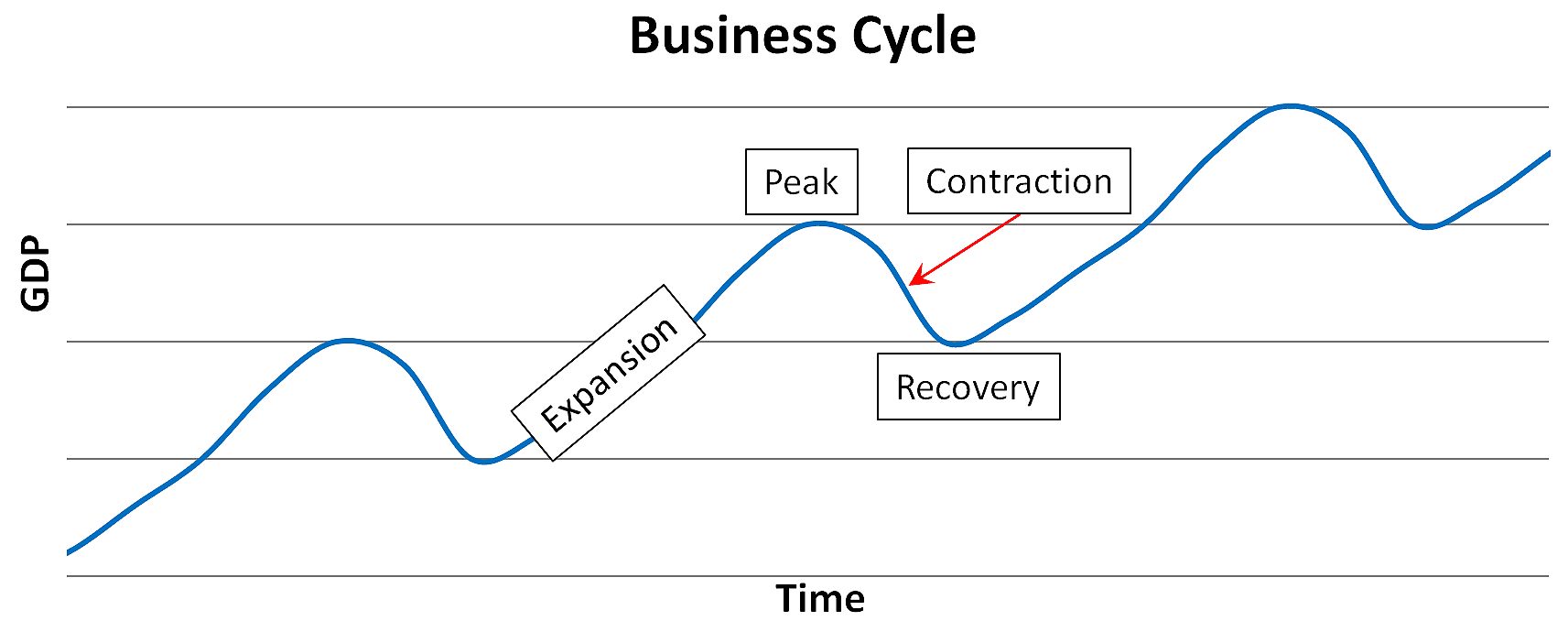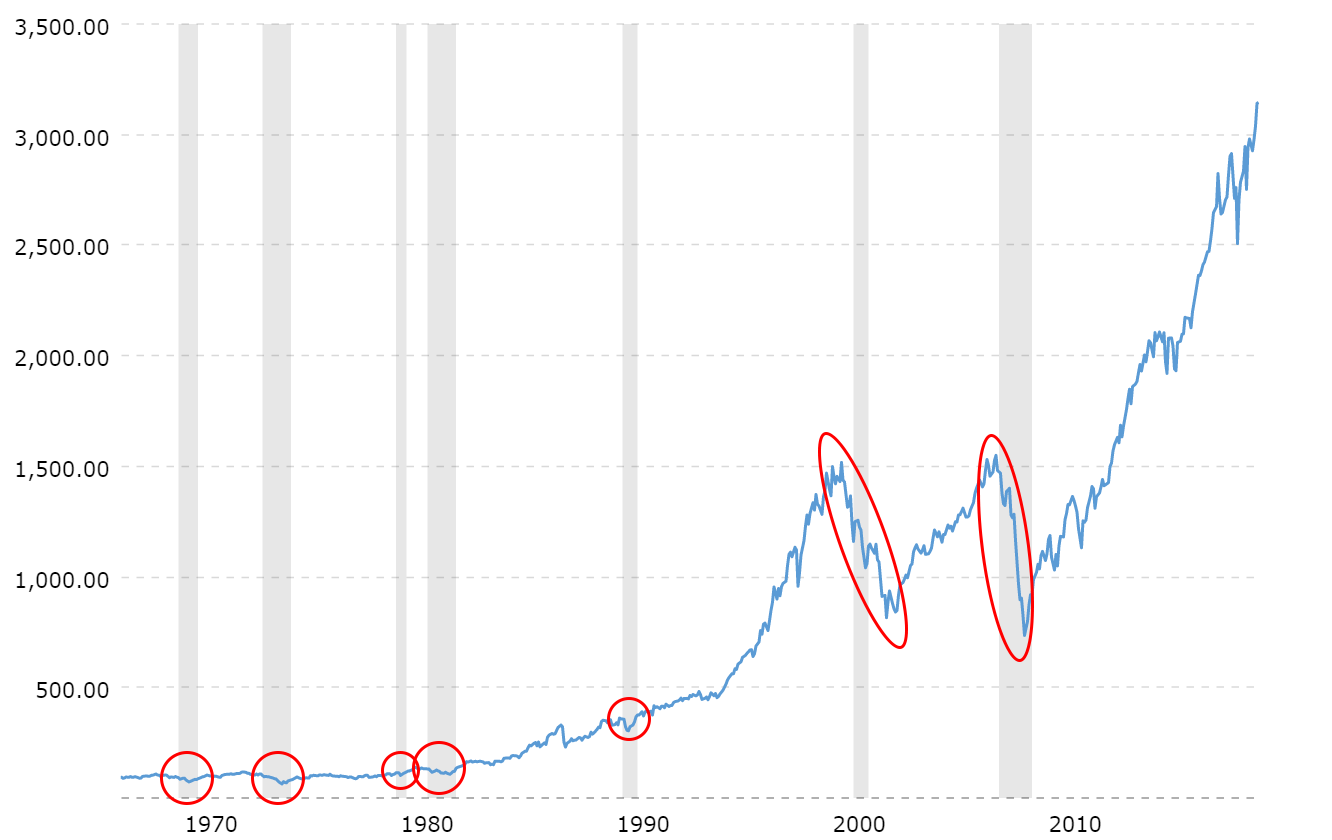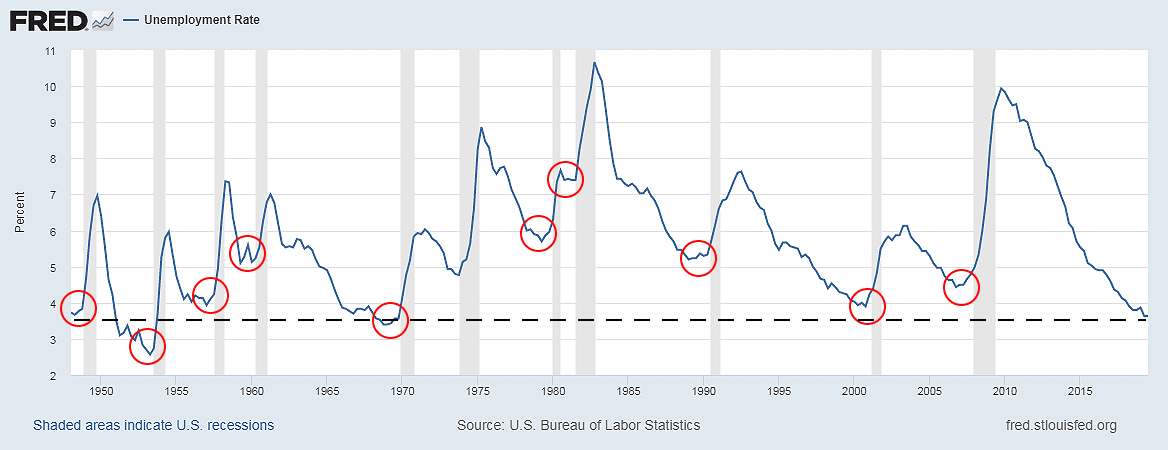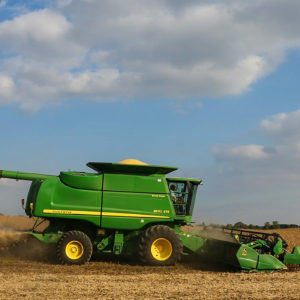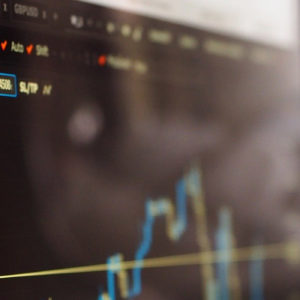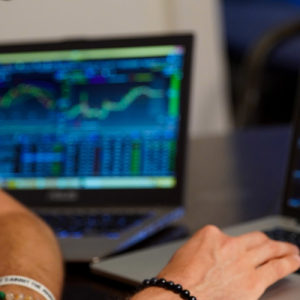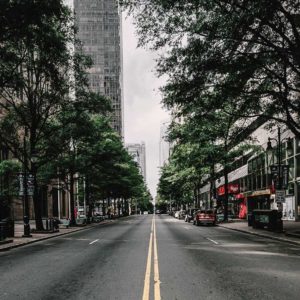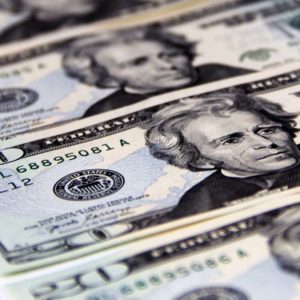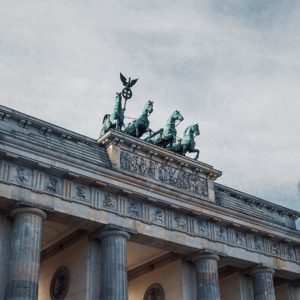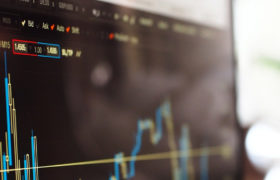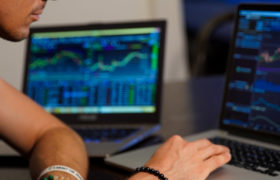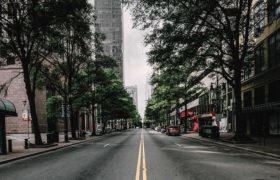Learn what is a recession and why does it happen. Discover how recession impacts you, the economy and find out the positive effects of it.
Recession is one of the toughest periods in the economy. Sadly, but usually many people lose their jobs and salaries decrease. Furthermore, the unemployment level rises and many businesses go bankrupt. However, recessions are needed for the economy.
They happen in cycles and repeat about every 5-8 years. While it is not possible to avoid them, at least it is possible to lose less during the recession than others do. You can prepare for the next recession by educating yourself about the recessions and the reasons why they happen.
Since the recessions happen cyclically, your understanding of them will help you for the rest of your life.
If you are not sure what are you doing on this page, visit 6 reasons why it is worth learning the basics of the economy.
What is a Recession?
In economics, a recession definition is the contraction phase of the business cycle, which usually happens every 5-8 years. Economy swings in cycles (which are mainly credit-driven) and it is impossible to avoid them. But it is possible to prepare for a recession and even profit from it. Most of the millionaires were made during recessions.
Recession is a tough period for everyone because many people lose their jobs, salaries decrease, consumption decreases and many businesses go bankrupt. Also, it is harder to service credit and some people start to use their savings to service it. or even worse – take money from their retirement accounts.
Exist many official definitions of the recession, but the simplest one is in the UK. There, the recession is declared when Gross Domestic Product (GDP) contracts for two quarters in a row. Usually, the decline can also be noticed in real income, employment, production and sales sectors numbers.
Below is the graph of the GDP of the US. Red dashed lines show declines of GDP. Recessions were declared each time after a sharp decline in GDP.
Why does the Recession happen?
A recession happens because of a decline in economic activity. It can occur because of many reasons. Usually, it occurs because of the sharp reduction in spending of public, companies and governments.
For example, spending can decrease because of a huge increase in material prices, such as oil. Furthermore, various geopolitical events, wars, changes in demographics, various government policies, financial bubble bursts or any other unexpected events can trigger a recession.
Recession can take place in one or a few countries, or expand even further. Especially nowadays, when the all-world economy is connected more than ever, the recession in a single country expands to other countries and even contents.
However, the recessions are officially stated only after they already started. And usually, it is stated later than 6 months after it started. The problem is that the calculation of data takes some time to process and later it must be analyzed.
Can we avoid recession?
Unfortunately, no. Recession is unavoidable and it always comes sooner or later.
Therefore, you can prepare for it and survive it easier than others. In addition, the basic understanding of the business cycles will help you to understand when to expect a recession.
What is Recession in Business cycle?
In total there are 4 main phases in the business cycle: expansion, peak, contraction and recovery (see the graph below). In some sources, you can find 6 stages, where contraction and recovery steps are split into two additional phases.
The expansion phase is when the economy grows, everyone earns more because salaries increase and in turn, people spend more. It drives the growth of the economy further. However, at the same time prices of products and services also increase.
The peak phase comes when the prices of products and services become very high, but salaries do not increase anymore. Some people start to realize that they are overpaying for products and services. They start to spend less.
Contraction (recession) is a phase when consumer spending starts to decrease. At this moment there are more products and services for sale than there are customers who want to buy them.
People realize that prices will fall and they wait for it and do not spend, yet. In turn, spending slows and thus the economy. Then companies start to reduce the number of workers because of reduced sales. Finally, there are more workers than jobs available and unemployment levels sky-rocket.
The recovery phase starts after the recession. At this phase, because of the low prices of products and services, people start to consume more. Furthermore, people start to take more credit, new businesses appear and more jobs are available. As a consequence, in this phase, it is best to invest in various stocks and business start-ups.
Recession length
Typically, the recession is a much shorter period than the economic expansion period. Of course, the length of economic expansion always varies as well as the length of the contractions. Some recessions can be shorter while others can be longer.
The average length of the expansion in the US is 58 months, while contractions on average lasted for about 11 months. Nowadays, the expansion cycle is even longer, while recessions still last on average 11 months.
The graph below shows all expansions and contractions in the US with their length. As you can see from the graph, in the last 50 years, expansions last longer than before. Furthermore, recessions last shorter.
The last Great recession ended in more than 10 years. Since then, we all live in the longest economic expansion in history. It makes sense, that the next recession is behind the corner.
Negative effects of the Recession
The recession has both negative and positive effects on the economy. Let’s start with the negative.
Firstly, unemployment rises sharply. This usually starts to happen just before the recessions, because many companies understand when a recession is coming and they start to cut their spending. At the same time, salaries decrease.
In turn, people start to spend less and that causes lower demand for products and services. As a result, companies have to cut their spending even more.
At the same time, more and more companies go bankrupt because of lower demand for their products. The last recessions also showed that banks are very vulnerable during economic contractions as well. This period is extremely dangerous for start-ups.
During a Recession
- Unemployment rate rises
- Salaries decrease
- Businesses go bankrupt
- Young people can't find job
- Asset prices fall (real-estate, stocks)
- Governments run deficit spending
Another negative effect of recessions is a low number of workplaces. For this reason, young people without or with low experience have extreme difficulties to find even low-paid job.
Because of lower salaries and reduced spending, governments also collect smaller taxes. Moreover, in some cases, they are forced to even cut taxes, because people are not able to pay them. In the end, governments must run deficit spending to ensure public services.
Lastly, the nominal value of real estate and stocks fall. Look at the graph below, which shows the S&P 500 performance over 50 years. The stock market value drops down during recessions. In some cases, the stock market dropped for more than 50% in a few years.
It is extremely painful when the recession happens because businesses go bankrupt and unemployment rises firstly and only later the prices of products and services fall. However, recessions bring many positive effects on the economy.
Positive effects of the Recession
Recession is needed for the economy because it reduces inflation and the prices of products and services. However, most of the people look only at the short term effects and don’t understand that recessions bring positive long-term effects for both the economy and the public.
First of all, recessions cure inflation, because they are deflationary. The inflated prices of products and services during economic growth drop because of the reduced demand for them. This is good long-term because the prices will normalize over time and most products and services will be cheaper.
Secondly, businesses that are un-healthy must cut their spending and change their work methods into more productive ones. In addition, they eliminate non-productive workplaces and must update their business model. As a result, the whole business sector becomes more productive, efficient and secure.
Finally, the attitude of public changes and they start to spend less on non-necessary stuff and spend more on things that make them more efficient. It helps to keep the public efficient. At the same time, the public takes credit more responsibly and don’t take credit for luxury stuff they can’t afford.
Positive effects of a Recession
- Inflation reduces
- Products and services become cheaper
- Businesses reduce spending on non-necessary services
- Businesses become more secure and efficient
- People spend more efficient
- Public stops taking credit for luxury stuff they can't afford
- Creates many investing opportunities
In conclusion, a recession is like a small restart for the economy. It helps the economy to stay healthy and balances economic growth.
Recession in 2008
I am sure that everyone felt the swings of the business cycle in their lives. Do you remember the Great Recession of 2008 when housing prices were dropping down and the stock market plunged about 50% in the US?
More or less the same scenario will repeat in the next recession. Furthermore, the next recession will be even bigger and longer for many reasons (money printing, lowest interest rates and so on).
Moreover, during the last recession the unemployment rate sky-rocketed. Look at the graph below. This is the unemployment rate in the US. The red circles show the lowest unemployment rates, just before each recession.
Look, currently, the US is at the lowest unemployment in the last 50 years.
Why did the 2008 economic downturn happen?
There are many events, wrong decisions and policies combined that caused the recession of 2008. It includes banks, who gave credit to everyone, but also people, who took so much credit without expectation of an increase in interest rates in the future.
Moreover, low interest rates that were kept for a long time at almost zero percent offered cheap credit for people and companies. People always take the credit if they can.
Also, various de-regulations that were done to the financial industry that allowed banks to engage in hedge funds (offshore investment funds that allow speculation of borrowed capital and in turn make money) with various derivatives (products whose value is derived from an underlying asset, such as real-estate).
However, each recession is slightly different and each recession is caused by different events.
Recession might be behind the corner
We currently live in the longest economic expansion in history. I would say that there is a huge probability of a recession soon.
Recession is a tough period for everyone, but it is needed for the economy. Mostly, many people lose their jobs and salaries drop together with the purchasing power of the public.
While it causes many businesses to go bankrupt, on the other hand, it makes the whole business sector more efficient, productive and secure long-term.
At the same time, non-efficient employees will be replaced by more qualified and better employees. As a result, people start to educate themselves and invest more in qualification.
Also, the public starts to take credit more carefully – for productive purposes and not for not-necessary stuff.
Because the next recession will touch us all, start to educate yourself today and prepare for it. History shows that each recession brings enormous investing opportunities, both during them and after they end. You don’t want to miss these opportunities.
Soon a new post will be created about recession indicators that predict recession in the near future. Subscribe and get it earlier than others
